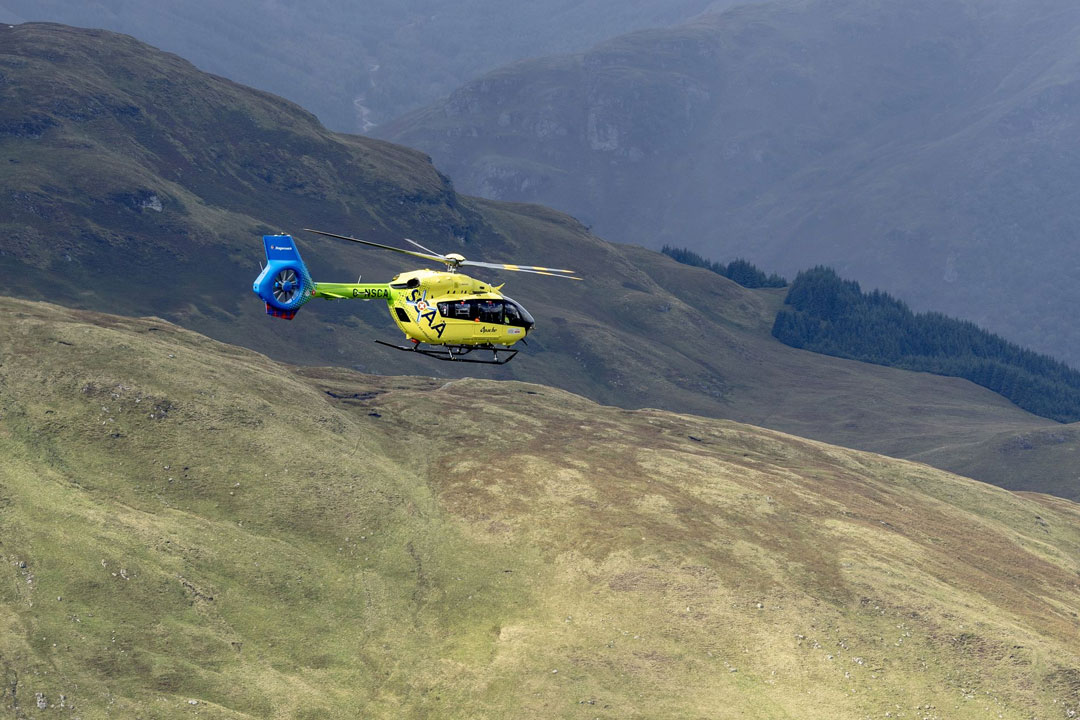The Scotland advanced air ambulance is now officially the most capable medical transport helicopter of its kind in the UK. Scotland’s Charity Air Ambulance (SCAA) has introduced an Airbus H145 D3 aircraft designed for greater range, endurance, and capacity, replacing the older EC135 model based in Aberdeen.
This new aircraft promises to significantly improve how quickly and effectively critical care can be delivered across Scotland, particularly in its most remote and challenging areas.
Scotland’s Air Ambulance Landscape
Founded in 2010 and operational since 2013, Scotland’s Charity Air Ambulance (SCAA) supports the Scottish Ambulance Service by operating helicopter emergency medical services (HEMS) from bases in Perth and Aberdeen. The existing fleet of Eurocopter EC135 helicopters has performed thousands of missions, often in difficult terrain, severe weather, and over vast distances. But limitations in fuel range, cabin space, and equipment have made some remote to clinic transfers and nighttime operations more challenging.
The H145 D3: Technical Enhancements and Capabilities

The advanced Airbus H145 D3 is set to take over from the charity’s existing EC135, operating from SCAA’s base at Aberdeen International Airport. | Photo: scaa.org.uk
The new H145 D3 brings several major improvements. Among them:
- Increased Range & Endurance: Larger fuel tanks allow substantially longer flights, enabling missions to the Shetland Islands or the Isle of Skye without refueling.
- Larger Cabin & Patient Stabilization: More internal space allows paramedics and retrieval doctors to work more effectively in flight, stabilizing patients during transport.
- Night Vision & All Weather Equipment: Enhanced instrumentation and imaging systems improve safety and operability during low light conditions, essential during Scotland’s long winter nights.
- Stronger Team Capability: The aircraft supports a multi disciplinary team of SCAA paramedics working with specialist retrieval doctors via EMRS (Emergency Medical Retrieval Service) in the north of Scotland.
Patient Outcomes and Coverage
These enhancements translate into tangible benefits. Faster response times for trauma, more direct transfers to major trauma centers, fewer secondary transfers, and improved survival and recovery prospects are expected. The ability to operate at night, reach farther, and carry more capability on board helps fill gaps in Scotland’s challenging geography, including remote islands, mountainous regions, and sparse road access.
Operational Changes & Logistics

H145 D3 atop a hospital helipad | Photo: scaa.org.uk
The new helicopter based at Aberdeen International Airport will replace the EC135 there, while the Perth based EC135 remains in service, ensuring nationwide coverage. Crew training for the H145 D3 begins in September, with operational deployments starting in October. Key partners in the rollout include Babcock Mission Critical Services Onshore, Airbus, Scottish Ambulance Service, and ScotSTAR North EMRS.
Funding, Support, and Sustainability
As with many air ambulance charities, public support and fundraising are central. The upgraded service will cost more to run, and SCAA has launched Operation Skyward to raise an additional £2 million per year on top of its existing budget of around £8 million annually. Community engagement remains strong, and awareness campaigns, including “show and tell” flights, are highlighting the new aircraft’s capability and the vital role of donors.
Challenges & Future Considerations

The state of the art Airbus H145 D3 will replace the charity’s current EC135 at its Aberdeen International Airport base. | Photo: scaa.org.uk
While the H145 D3 is a major step forward, some challenges remain. Night operations and difficult terrain still carry risks for safety and maintenance costs. Sustaining higher operating costs requires stable funding sources, and ensuring availability of specialized staff, paramedics and doctors trained for pre hospital critical care in remote settings, is also vital.
Enhancing Response and Saving Lives
Scotland’s adoption of the H145 D3 as its flagship medical transport helicopter cements its position at the front of UK pre hospital emergency medical services. The new aircraft’s increased range, improved patient care capacity in flight, and robustness for adverse conditions make it a transformative tool in saving lives. While challenges of cost, staffing, and logistics remain, the benefits in coverage, speed, and clinical outcomes are significant.
As these improvements roll out, Scotland’s most advanced air ambulance will likely become a model in how geography, technology, and charitable effort combine to enhance emergency care.
